Modern Star Dust
Comparison of all human produced space debris for Red Bull's "Terra Mater" magazine.
Making the quantity of all human produced objects feasible which circulate around our planet might be difficult to imagine. So we built a storyline that picks up the subject from different perspectives. Based on the satellite tracking data from AGI we mainly focused on an accurate comparison of all 1013 active and 4919 passive satellits and rocket stages, which are floating far above our heads. The capacity of both cubical volume are the exact relations between active and inactive ones (and the exact count). In addition each of the thiny star like dots around the cubes represents one piece of 20.000 debris objects bigger than 10 cm.
German version: http://ixtract.de/portfolio-item/terra-mater-moderner-sternenstaub
German version: http://ixtract.de/portfolio-item/terra-mater-moderner-sternenstaub
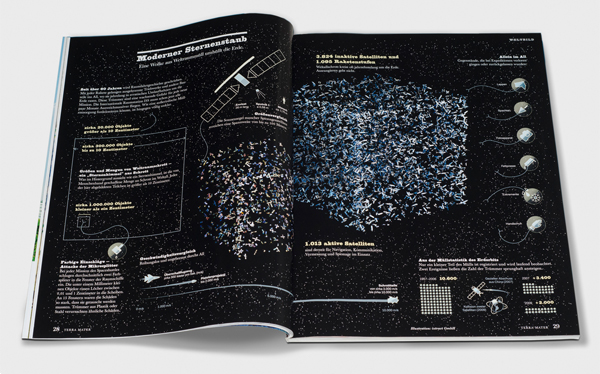
Our graphic spread printed in the august 2013 edition.

The client: Terra Mater magazine, a scientific journal from Austria, published by Red Bull Media House GmbH.
A first impression of which objects are circling in orbit around us - as it were, our briefing!
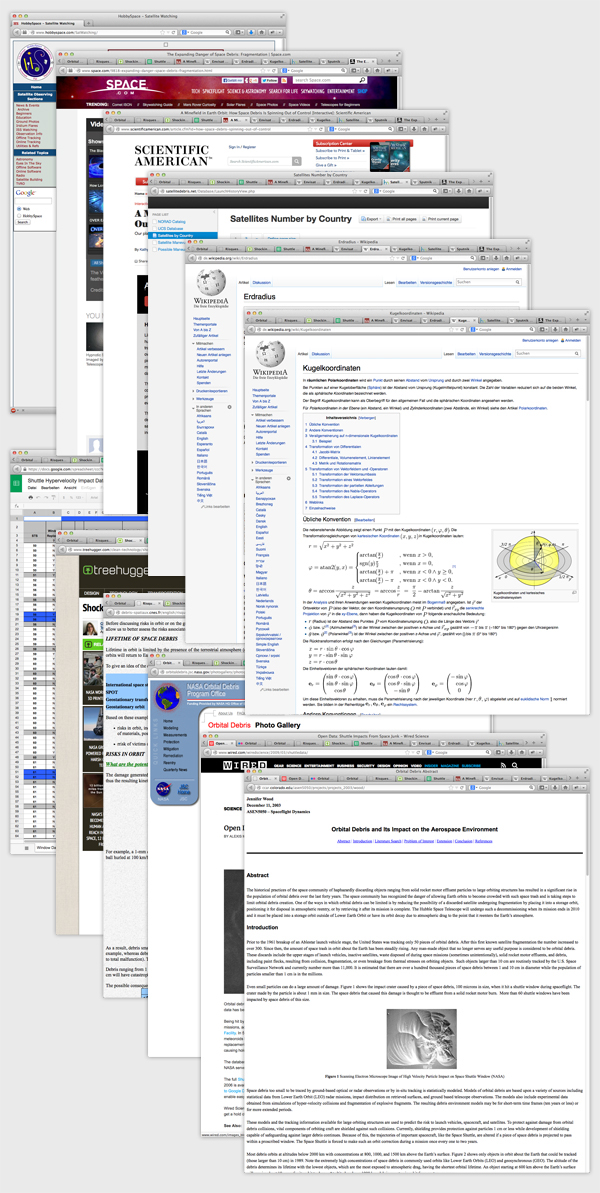
First step was do to a research and investigation for usable data sets which started on Wikipedia, continued across a variety of amateur astronomer websites and finally led us to... ...NASA homepage.
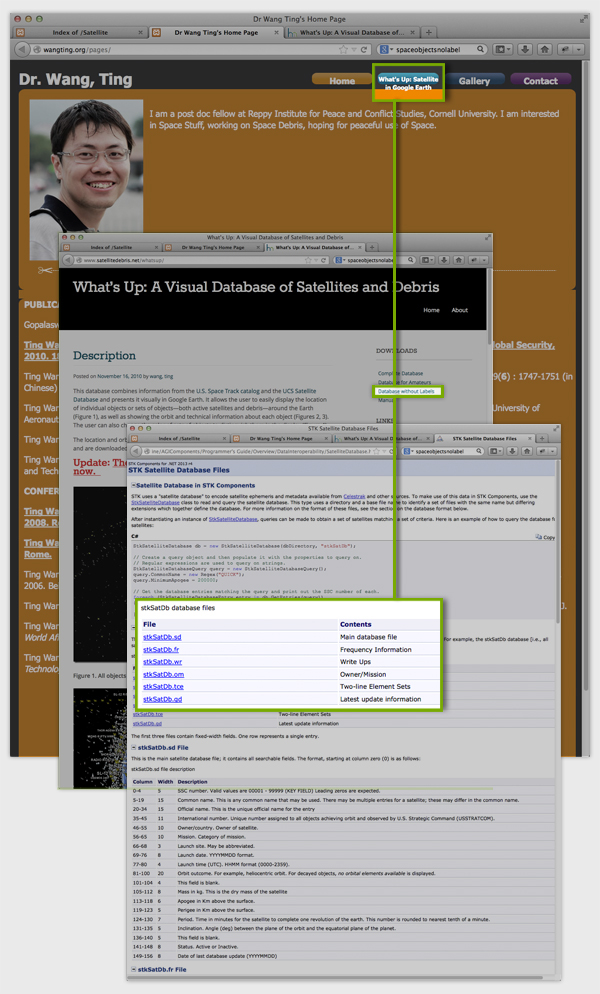
But the deciding hint was given by Dr. Wang, Ting's Blog: He linked us to AGI (Analytical Graphics, Inc.) where we found the Satellite Dataset where all registered active and space debris objects, including there current position in space, can be found.
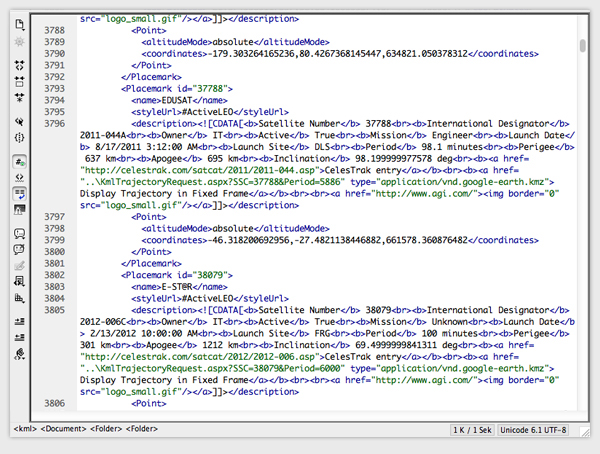
A code snippet of the basis data set – with a cryptical appearing at first glance.

With some small adjustements it was possible to import this data set into Google Earth, but this was a deqad end: You can't see all objects at the same time in different distances to Earth and one third of all objects are hidden behind the globe. So we had to find a better way to show the debris relation.

Therefor we focused on the very important facts within the data set we would really need. E.g. is it an active or inative debris object and what's the current position in angular coordinates.

With a small PHP-script we created a filter for these informations and a small, easy to read and 14,000 row long table we could finally work with.
Extracted data from Space Debris.
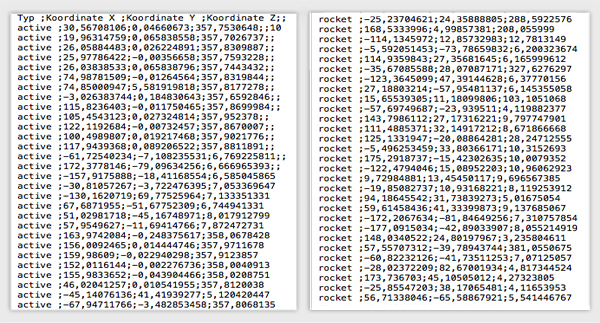
To import this file in 3D, now, we had to make additional minor changes and refresh our...

...memory of Cosinus and Sinus Algebra from school lessons long past.
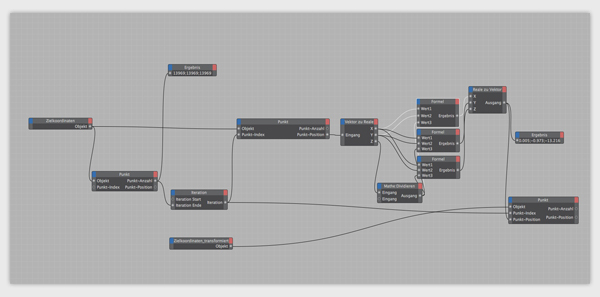
A small control panel setup in 3D added the diameter of the Earth.

And there it was. But: We couldn't use it! Everything was quite too small and relations could not properly be read regarding active and debris objects in our orbit. So what to do now?
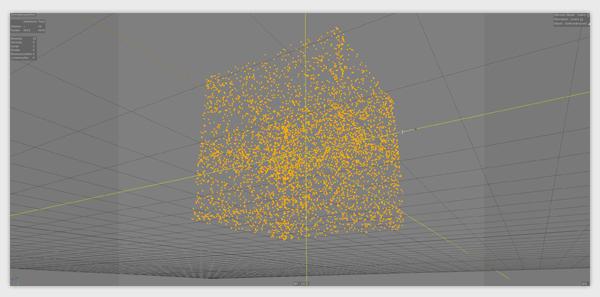
We used the propriatee situation that you can easily create a volumetric cube with given angular coordinates and random distribution was included this way, too.

And this lead us to our final and "simple" graphic idea.

We had to do some fine tunings stil, as the first cubes charged with satellites lost the clear edges of the volumetric object.

This is the sattelite icon set we used to fill the cubes.
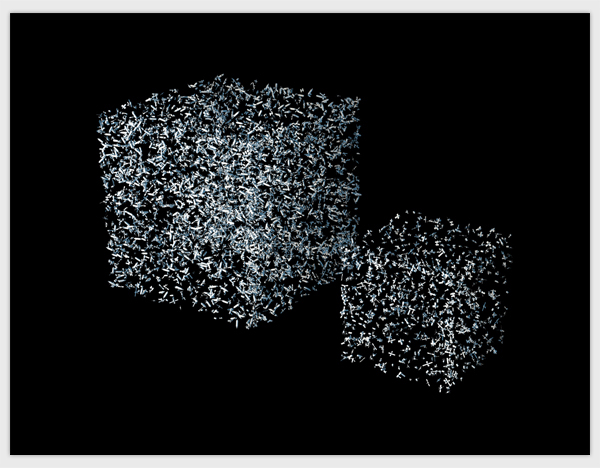
Final 3D Cubes which show the amount of debris satellites and rocket stages to the left, compared with the amount of active satellites to the right. Somehow surprising...
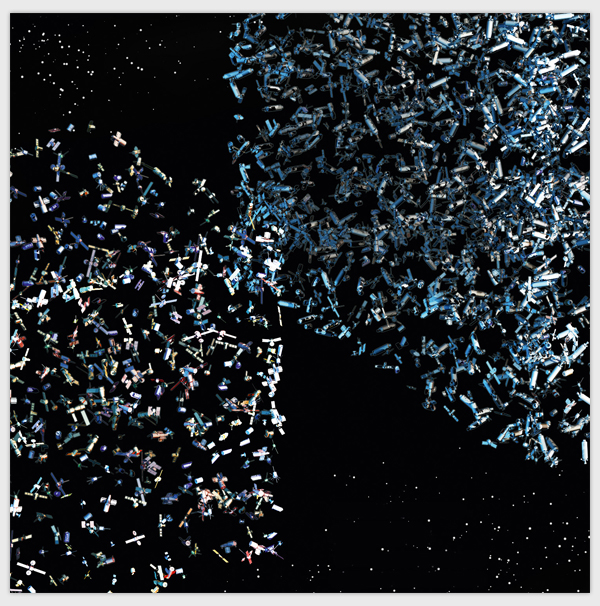
Active satellites accumulated in various 3D models.
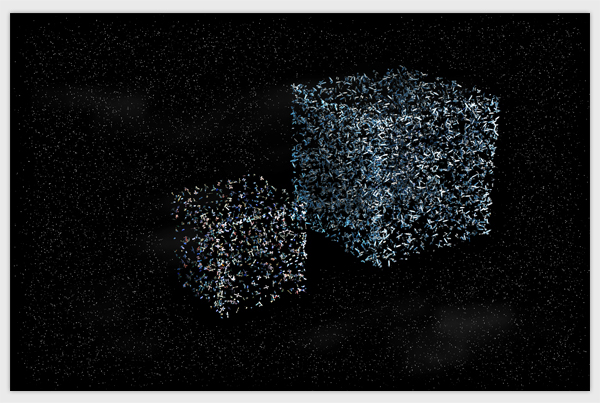
The background doesn't show the starry sky but all additional 20,000 debris objects measuring more than 10 cm size.

Additional infographics in 2D. The upper one is a scale comparison and the second one at the bottom tells a story about rising space debris.

Icons of some forgotten or lost objects in outer space, including the camera shown in the briefing at the beginning of this articel or a scraper. They now orbit the earth as debriis for the next million of years.

And our final graphic in the end.








